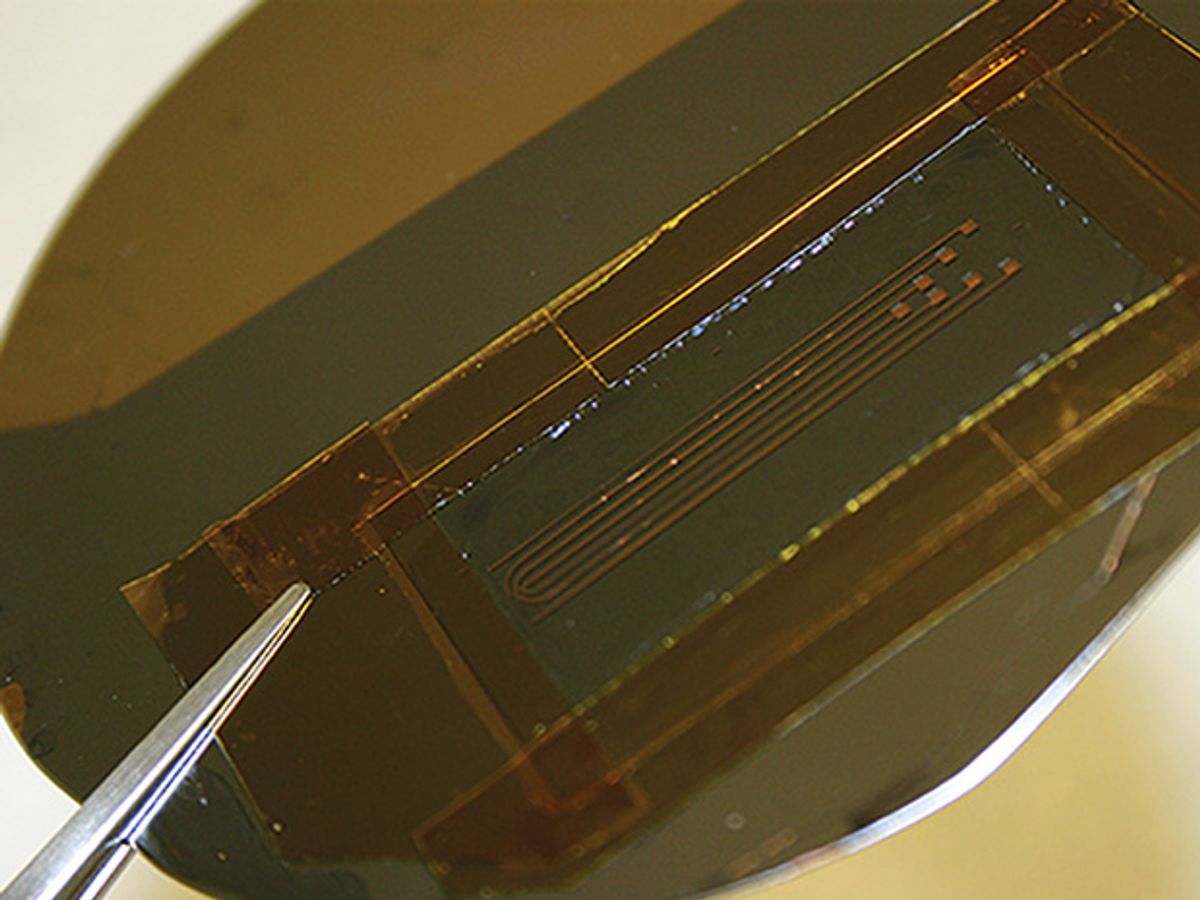In a normal bladder, nerves sense when the bladder begins to fill up and electrochemically send a message to the brain. When the signals say it's time to go, the bladder contracts, the sphincter relaxes, and presto: urination. But a spinal cord injury can disrupt the signals to the brain and eliminate the fullness sensation and muscle control. A person with this kind of injury is forced to empty his bladder with a catheter.
In Fawcett's design, parts of the spinal nerves called dorsal roots are teased out into rootlets; the rootlets are placed in an implanted microchannel electrode interface. The microchannels record signals from the nerves and can determine, by the amount of activity, when the bladder is getting full. A stimulator connected to the nerves sends high-frequency stimulation to stop the bladder from emptying itself. When the user is ready to urinate, he or she can push a button that causes the device to deliver low-frequency stimulation that allows the bladder to empty. The researchers envision a handheld device that buzzes to let the user know it's time to go. (Parents: wouldn't it be great to have a buzzer like that for potty training preschoolers?)
Of course it will be a while before the device is ready for humans. In the rat experiments, the rootlets only survived for a few months after they were placed in the microchannels. That lifespan will have to be increased considerably before the device would be useful in humans, the authors said.
In a separate approach, researchers at the University of Louisville have been experimenting with epidural stimulation of the spinal cord to restore bladder control and other functions in people with spinal cord injuries. The work has been largely successful, but experiments have only been completed in a few people.
Illustration: Evangelos Delivopoulos
Emily Waltz is a features editor at Spectrum covering power and energy. Prior to joining the staff in January 2024, Emily spent 18 years as a freelance journalist covering biotechnology, primarily for the Nature research journals and Spectrum. Her work has also appeared in Scientific American, Discover, Outside, and the New York Times. Emily has a master's degree from Columbia University Graduate School of Journalism and an undergraduate degree from Vanderbilt University. With every word she writes, Emily strives to say something true and useful. She posts on Twitter/X @EmWaltz and her portfolio can be found on her website.




